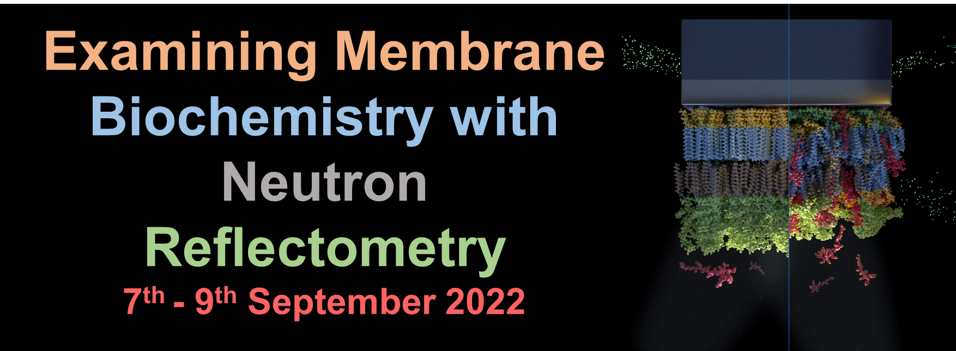Speaker
Description
Surface-sensitive scattering of x-rays or neutrons has long been used to characterize the molecular scale properties of lipid monolayers and bilayers at aqueous surfaces and interfaces,[1,2] but has not been in the standard toolbox for structural biology due to several limitations. Most seriously, the intrinsic resolution of reflectometry in its application to biological membranes is far less than that of more established methods such as x-ray crystallography or NMR spectroscopy [3]. Yet, combining multiple sources of information have leveled this playground, thus unleashing the intrinsic strengths of reflectometry to provide structures of protein complexes on fluid bilayers that closely resemble biomembranes.
We developed a comprehensive infrastructure for biological reflectometry that includes stable sample environments, optimized measurement capabilities and innovative data modeling [4]. Prediction of the information gain expected from measurements at optimized neutron scattering length density (nSLD) contrasts across the samples[5] and the steering of molecular dynamics (MD) simulations using experimental nSLD profiles [6] have augmented the utility of the method further. Because radiation damage is not an issue in neutron reflection even at room temperature (as opposed to X-ray scattering), conformational changes of membrane-associated proteins can be triggered by external cues, and structurally characterized [7]. Using these tools to characterize the membrane-associated structure of the tumor suppressor KRas4B, we observed that disordered segments of the protein let this GTPase function as a membrane-bound conformational switch [8] and allowed us characterize its structures in membrane-bound complexes with downstream binding partners of the KRas signaling cascade.
- C.A. Helm, H. Möhwald, K. Kjaer, and J. Als-Nielsen, Europhys. Lett. 1987, 4, 697-703.
- S.J. Johnson et al., Biophys. J. 1991, 59, 289-294.
- M. Schalke and M. Lösche, Adv. Colloid Interf. Sci. 2000, 88, 243-274.
- F. Heinrich and M. Lösche, Biochim. Biophys. Acta 2014, 1838, 2341-2349.
- B.W. Treece et al., J. Appl. Cryst. 2019, 52, 47-59.
- B. W. Treece, F. Heinrich, A. Ramanathan, and M. Lösche, J. Chem. Theory Comput. 2020, 16, 3408 - 3419.
- S.A.K. Datta, et al., J. Mol. Biol., 2011, 406, 205-214.
- Q. N. Van et al., Proc. Natl. Acad. Sci. USA 2020, 117, 24258-24268.

